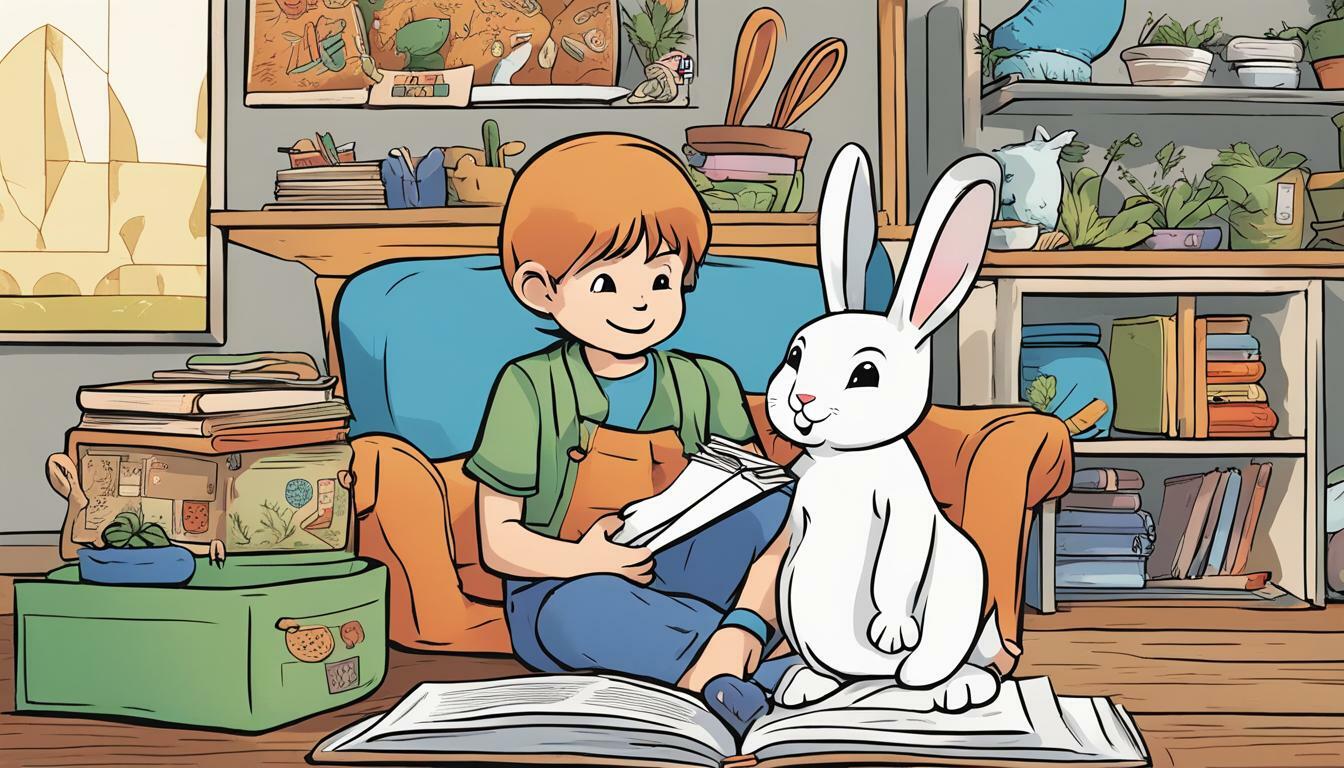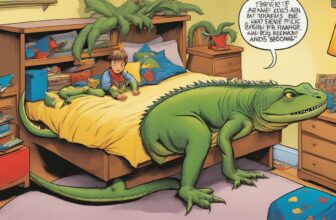
Hello there, I’m excited to tackle a question that many parents have likely wondered about: Are rabbits good pets for kids? I’ve done extensive research on the topic and uncovered a lot of fascinating information. In this article, I’ll share what I’ve learned so you can make an informed decision about whether a pet rabbit is right for your family.
Key Takeaways:
- Rabbits can make great pets for kids when proper care and guidance are provided.
- They are gentle, low-maintenance animals that can teach kids valuable lessons about responsibility and empathy.
- Choosing the right breed, creating a safe environment, and providing mental stimulation are crucial aspects of rabbit ownership.
The Benefits of Having Rabbits as Pets
As a parent, you may be wondering if rabbits make good pets for kids. The answer is a resounding yes! Not only are rabbits adorable and cuddly, but they also have many benefits as pets. Here are some of the reasons why rabbits make great pets for children:
Gentle Nature
Rabbits are gentle creatures that rarely bite or scratch. They are ideal pets for kids who may be nervous around larger animals. Unlike dogs or cats, rabbits won’t jump on children or knock them over, making them a safer choice for families with young kids.
Low Maintenance Requirements
Rabbits are low maintenance pets that are easy to care for. They do not require daily walks like dogs, and they can be litter box trained. Additionally, rabbits typically do not require regular baths as they groom themselves like cats.
Teaching Responsibility and Empathy
Rabbits can teach children valuable lessons about responsibility and empathy. By taking care of a pet rabbit, kids learn the importance of feeding, watering, cleaning, and providing mental stimulation for their pets. They also learn how to be patient and gentle when handling animals, which can help them develop empathy and compassion for all living creatures.
Overall, rabbits are wonderful pets for children. Their gentle nature, low maintenance requirements, and the valuable lessons they can teach kids about responsibility and empathy make them a perfect addition to any family.
Caring for Rabbits as Pets: What Kids Need to Know
As a parent, you want to make sure that your child is equipped with the knowledge and skills to care for their pet rabbit properly. Here are some tips for raising rabbits as pets:
Feeding
Rabbits need a diet rich in hay, fresh vegetables, and fruits to maintain good health. Commercial rabbit pellets should make up no more than 10% of their diet. Make sure to provide fresh water at all times. Additionally, avoid feeding rabbits foods that are high in sugar or carbohydrates, as it can lead to dental and digestive problems.
Housing
Rabbits need adequate space to move, play, and stretch. A cage that is at least four times the size of the rabbit is recommended. The cage should also have a solid bottom to prevent injury, and be cleaned daily to maintain hygiene. Additionally, provide a litter box in the cage to train the rabbit to use it as their bathroom.
Grooming
Regular grooming is necessary to keep your rabbit’s fur and skin healthy. Brush their fur gently with a soft-bristled brush, especially during shedding season. Additionally, trim their nails regularly to prevent overgrowth and potential injury.
Handling
Rabbits are social animals and enjoy human interaction, but it’s essential to handle them with care. Always support their body and handle them gently to prevent injury. Additionally, supervise young children and teach them how to handle rabbits properly.
Responsibilities
Owning a pet rabbit comes with responsibilities, such as providing food, water, housing, and medical care. As a parent, you can teach your child how to take care of their pet rabbit by assigning them tasks such as feeding, cleaning the cage, and grooming. Make sure to supervise and guide them to ensure proper care.
By following these tips, your child can provide their pet rabbit with a safe and comfortable living environment. Furthermore, they can learn valuable lessons about responsibility, empathy, and animal welfare through caring for their pet rabbit.
Choosing the Right Rabbit Breed for Kids
As a parent, choosing the right pet for your child can be overwhelming. When considering rabbits as pets for kids, it’s important to select a breed that will suit their needs and lifestyle. Here are some rabbit breeds that are suitable for children.
| Rabbit Breed | Temperament | Size | Grooming Needs |
|---|---|---|---|
| Holland Lop | Docile and affectionate | Small (2-4 lbs) | Regular brushing |
| Netherland Dwarf | Active and playful | Small (2-3 lbs) | Minimal grooming |
| Lionhead | Gentle and social | Small (2-4 lbs) | Regular brushing and occasional trimming |
| Rex | Intelligent and calm | Medium (7-10 lbs) | Minimal grooming |
When considering a rabbit breed for kids, it is important to choose a breed that has a gentle temperament and is not overly aggressive. Smaller breeds are generally recommended, as they are easier for children to handle and require less space. It’s also important to consider grooming needs, as some breeds require more frequent brushing and trimming.
Ultimately, the breed you choose will depend on your child’s age and living situation. It is important to research each breed thoroughly and choose one that will fit well with your family’s lifestyle and needs.
Remember, owning a pet rabbit is a big responsibility, and it’s essential to provide proper care and attention to ensure their health and happiness. With the right breed and proper care, rabbits can make wonderful pets for kids.
Pros and Cons of Rabbits as Pets for Children
As with any pet, there are pros and cons to consider before bringing a rabbit into your home. Here are some of the main points to keep in mind.
The Pros:
- Companionship: Rabbits can be wonderful companions for children, providing love and affection.
- Gentle Nature: Rabbits are generally gentle creatures, making them good pets for kids who may be scared of larger, more boisterous animals.
- Educational Value: Owning a rabbit can be a valuable learning experience for kids, teaching them about responsibility, empathy, and basic animal care.
- Low Maintenance: Rabbits require minimal grooming and don’t need to be walked, making them a low maintenance pet for busy families.
- Indoor Living: Rabbits can live comfortably indoors, making them a good choice for families who live in apartments or areas with limited outdoor space.
The Cons:
- Allergies: Some kids may be allergic to rabbit fur or dander, causing respiratory issues.
- Litter Box Training: Like cats, rabbits can be litter trained, but it requires patience and consistency.
- Rabbit-Proofing: Rabbits love to chew on everything, so it’s important to rabbit-proof your home to prevent damage and keep them safe.
- Long-Term Commitment: Rabbits can live up to 10 years or longer, so it’s important to consider the long-term commitment involved in caring for a pet rabbit.
- Health Issues: Rabbits are susceptible to certain health issues, such as dental problems or gut stasis, which can be costly to treat.
Overall, rabbits can make great pets for kids with the proper care, attention, and guidance. It’s important to carefully consider the pros and cons before making a decision, and to always prioritize the health and happiness of your pet.
Creating a Safe and Enriching Environment for Rabbits
One of the most critical aspects of owning a rabbit is ensuring that they have a safe and enriching environment to live in. Here are some essential tips for creating such an environment:
| Tip | Description |
|---|---|
| Create a spacious living area | Rabbits need ample space to move around, so make sure their cage is large enough for them to stretch out fully. A minimum of four square feet is recommended for small rabbits, and larger breeds may require more. |
| Provide a comfortable bed | Rabbits need a soft and comfortable bed to rest in, so consider using straw, hay, or soft bedding material. Make sure to change it frequently to keep it clean and fresh. |
| Create a safe environment | Rabbits are curious animals and can easily get into trouble, so ensure that their living area is rabbit-proofed. Remove any cables, sharp objects, or toxic substances that could harm them. |
| Offer plenty of mental stimulation | Rabbits enjoy playing and exploring, so provide them with toys, tunnels, and hiding spots. You can also rotate their toys regularly to keep them engaged and entertained. |
| Allow for exercise | Rabbits need plenty of exercise to stay healthy, so make sure they have access to a safe and enclosed area where they can run and play. Daily exercise outside of their cage is recommended. |
By following these tips, you can create a safe, comfortable, and engaging environment for your pet rabbit. Remember to regularly clean and maintain their living space to ensure that they stay happy and healthy.
Teaching Kids Responsibility through Rabbit Ownership
As parents, we are always looking for ways to teach our kids responsibility and instill valuable life skills. One great way to achieve this is through owning a pet rabbit. Not only do rabbits make great companions, but they also require daily care and attention, making them the perfect teaching tool for responsibility.
So, how can we use rabbit ownership to teach our kids responsibility? Here are some ways:
| Task | Age to start | Responsibility taught |
|---|---|---|
| Feeding | 5 years old | Providing basic needs of the pet |
| Cleaning the cage | 6 years old | Hygiene and cleanliness |
| Grooming | 7 years old | Caring for the pet’s appearance and health |
| Playtime and exercise | 8 years old | Importance of physical activity and mental stimulation |
It’s important to note that the level of responsibility should increase as the child gets older and more experienced in caring for a pet. Parents should also supervise and guide their children in these tasks to ensure the safety and well-being of the rabbit.
By taking on these responsibilities, kids also learn empathy and compassion towards their pet rabbit. They develop a bond with their pet and begin to understand the importance of meeting the needs of another living being.
Additionally, owning a rabbit requires a long-term commitment and teaches kids the value of dedication and follow-through. They learn that having a pet is not just a short-term hobby, but a lifelong responsibility.
Overall, rabbit ownership can be a wonderful way to teach kids responsibility and life skills. By involving them in the daily care and maintenance of their pet, they learn the importance of responsibility, empathy, and dedication.
Conclusion
In conclusion, are rabbits good pets for kids? I believe that they can be a wonderful addition to a family with children, but it’s important to be aware of the responsibilities involved. As we’ve discussed, rabbits are gentle, low-maintenance, and can teach kids valuable lessons about empathy and responsibility. However, they do require proper care and supervision, and it’s important to choose the right breed and provide a safe and enriching environment.
By following the tips and advice I’ve provided on caring for rabbits as pets, choosing the right breed, and creating a safe and enriching environment, families can enjoy the many benefits of having a pet rabbit. And, of course, kids can learn important life skills through their ownership of a pet rabbit.
So, if you’re considering a rabbit as a pet for your family, remember that with the proper care and guidance, they can make wonderful pets for kids.
FAQ
Q: Are rabbits good pets for kids?
A: Yes, rabbits can make great pets for kids. They are gentle, low maintenance, and can teach children valuable lessons about responsibility and empathy.
Q: What are the benefits of having rabbits as pets for children?
A: Having rabbits as pets can provide children with companionship, teach them about caring for animals, and help develop their sense of responsibility. Rabbits are also known for their gentle nature and can be easily handled by kids.
Q: What do kids need to know about caring for rabbits as pets?
A: Kids should be aware of the importance of proper feeding, housing, grooming, and handling of rabbits. They should also understand the responsibilities that come with owning a rabbit and the need for adult supervision.
Q: How do I choose the right rabbit breed for kids?
A: When choosing a rabbit breed for kids, consider factors such as the child’s age, living situation, and preferences. It’s important to consider temperament, size, and grooming needs to ensure the best fit for the child and the rabbit.
Q: What are the pros and cons of rabbits as pets for children?
A: There are many pros to owning rabbits as pets for children, including companionship and the opportunity to teach responsibility. However, there are also potential challenges such as allergies, litter box training, and the need for proper rabbit-proofing.
Q: How can I create a safe and enriching environment for my pet rabbit?
A: It’s important to provide a safe and enriching environment for pet rabbits. This includes ensuring the right cage size and bedding options. Additionally, offering toys, mental stimulation, and opportunities for exercise will help keep your rabbit happy and healthy.
Q: How can owning a rabbit teach kids responsibility?
A: Owning a rabbit can teach kids responsibility by involving them in tasks such as feeding, cleaning, and grooming. It’s important to provide parental guidance and emphasize the long-term commitment involved in caring for a pet rabbit.





